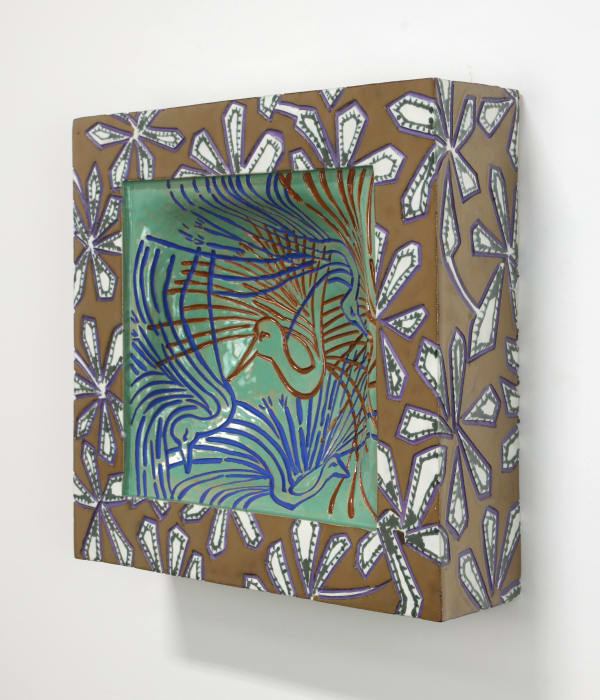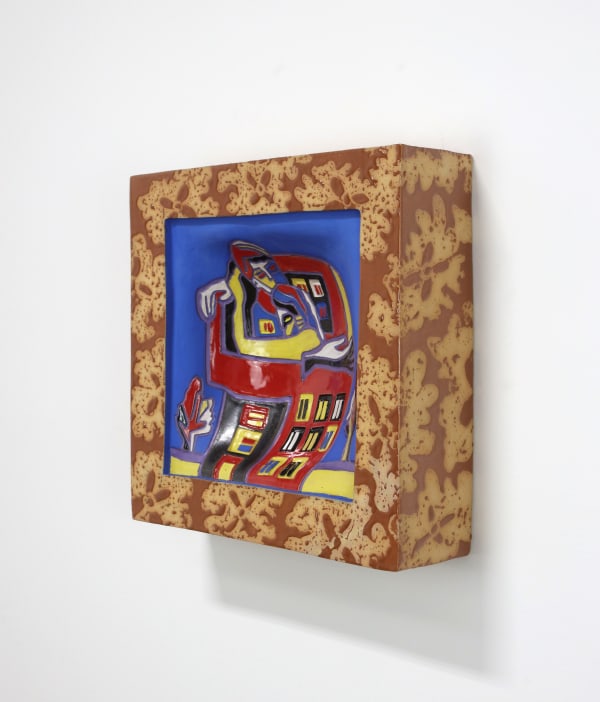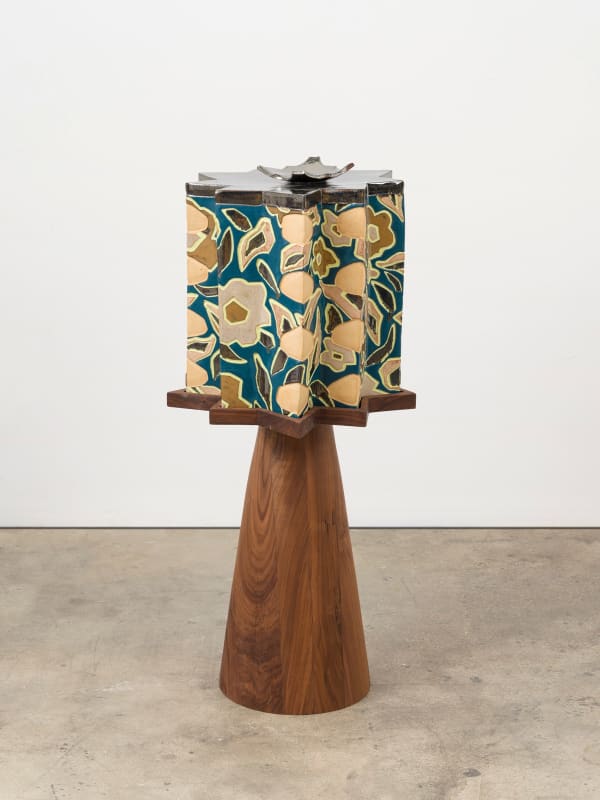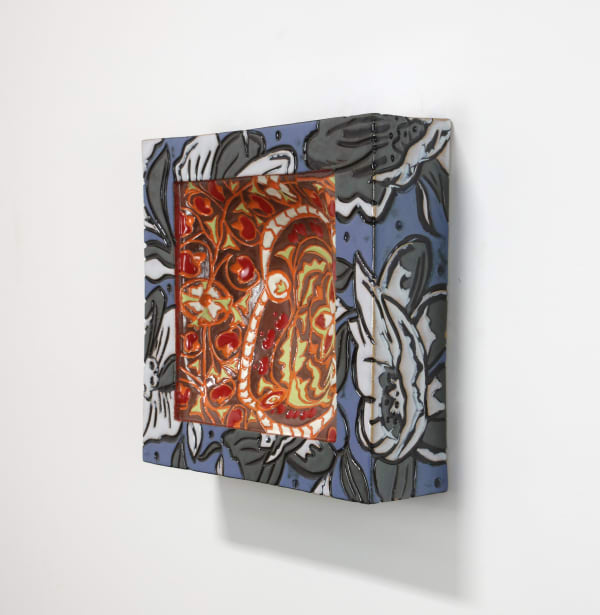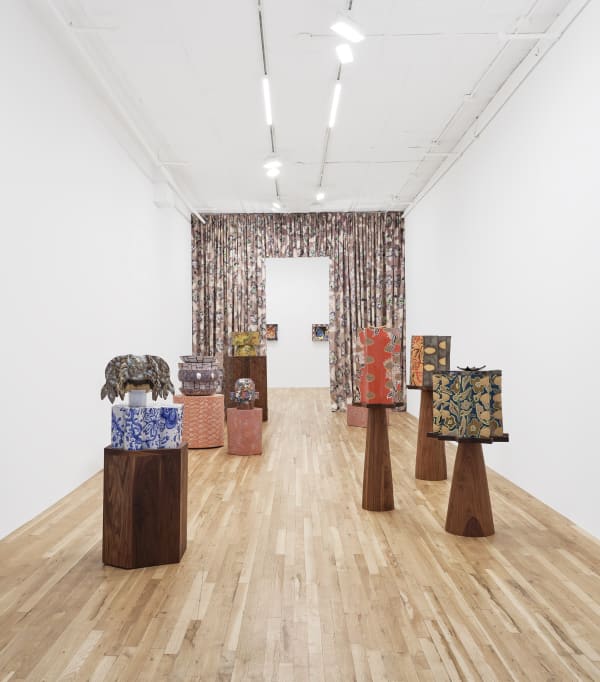Bari Ziperstein: Set Patterns
Charles Moffett is pleased to present Set Patterns, a solo exhibition of new mixed media, ceramic-based sculptures by Chicago-born, Los Angeles-based artist Bari Ziperstein.
This marks the artist’s second solo exhibition with the gallery and her first exhibition in New York since 2019. The gallery’s show coincides with Ziperstein’s inclusion in two U.S. museum exhibitions — Breaking Ground: Women in California Clay, on view through March 12, 2023 at the American Museum of Ceramic Art, Pomona, CA; and a site specific installation Domestic Choices, presented through March 13, 2023 at the Wende Museum, Culver City, CA.
Charles Moffett is pleased to present Set Patterns, a solo exhibition of new mixed media, ceramic-based sculptures by Chicago-born, Los Angeles-based artist Bari Ziperstein. This marks the artist’s second solo exhibition with the gallery and her first exhibition in New York since 2019. The gallery’s show coincides with Ziperstein’s inclusion in two U.S. museum exhibitions — Breaking Ground: Women in California Clay, on view through March 12, 2023 at the American Museum of Ceramic Art, Pomona, CA; and a site specific installation Domestic Choices, presented through March 13, 2023 at the Wende Museum, Culver City, CA.
Working in ceramics over the past 20 years, Ziperstein has developed an artistic mastery of the medium. Her rigorous and ambitious approach pushes the perceived limits of scale, form, construction, color and finish to create hand-painted sculptures of tremendous technical and ideological complexity. Materially experimental and conceptual at its core, the artist’s practice engages ideas of consumerism, propaganda, and the built environment. Since a 2015-2016 residency at the Wende Museum, Ziperstein has immersed herself in the aesthetics and ideas deployed in Soviet propaganda, particularly the ways that visual culture and the built environment signal repressive social and political ideologies.
The large-scale standing sculptures and wall-hanging pieces featured in this exhibition reflect Ziperstein’s long held interest in the totalitarian system propagated through design and architecture by the Soviet Union across Eastern Europe and around the world during the 20th century. By implicitly identifying the parallels between that not-so-distant history and our present socio-political moment, including the rise of extreme nationalism here in the U.S. and around the world, Ziperstein’s work challenges the construction of desire and aspiration in contemporary American culture through an astute historical lens — one that’s widely known, yet also deeply personal to the artist, whose family descends from the Russian, Ukrainian and Polish Jewish diaspora.
For Set Patterns, Ziperstein has drawn particular inspiration from the textile patterns that pervaded the Soviet Union in the 1920s and 30s — featuring vibrantly hued decorative motifs of overabundant plants and flowers, bucolic agricultural and productive factory workers, and electrified technical innovations. Such “soft power displays of Soviet prosperity and peace found their totalitarian counterpart in the cold, domineering style of Brutalist architecture, which has served as Ziperstein’s second point of reference for her newest body of work. Ziperstein’s sculptures manifest an imagined collision of these soft and hard means of visual propaganda — taking their structures from the sharp lines, unusual shapes and massive forms of Brutalist buildings, yet radically rejecting the architectural style’s disdain for decoration by covering their surfaces with an intricately carved and hand-painted collage of patterns, colors, and ornament.
By juxtaposing the two propagandistic techniques, the artist implicitly subverts their power, raising questions about the socio-political narratives and messages embedded in our aesthetic surroundings. Positioned on terracotta or walnut pedestals — integral components to each work and all constructed and ornamented by the artist — Ziperstein’s standing ceramic sculptures range in height from 25 to 55 inches tall. Positioned in clusters throughout the front gallery, the sculptures function in some ways as micro-monuments, creating a miniaturized urban landscape, distorting our sense of human scale in relation to architecture, and questioning how and why we create the monuments that surround and define us.
Moving to the back gallery, the exhibition showcases a series of new wall-hanging sculptures that feature carved, colorfully-painted patterns, echoing similar visual motifs as those adorning the standing pieces. Resting on cleats and hung flush against the wall, these rectangular sculptures underscore Ziperstein’s relentless pursuit of increasingly ambitious compositions. Building on the shadow box construction of earlier wall-hanging pieces, this new body of work layers frames within frames that encase an emerging domed form that comprises the central tableaux. Harkening back to the scale and shape of 1980s television sets, which the artist’s father sold for a period of her childhood in Chicago, each sculpture is a vehicle for storytelling — a potential channel for information and misinformation in equal measure.
Evolving from her current site-specific installation, Domestic Choices, in the historical German Guard House at the Wende Museum, Ziperstein has created a new curtain work specially for the exhibition at Charles Moffett. Hanging along the gallery’s central wall that divides the long, slender front room and its widened, high-ceilinged back room, the curtain serves as the backdrop for the show, the “set” among which the sculptures act and interact. Made in collaboration with Los Angeles-based artist and fabricator Jill Spector of In Favor Of, the curtain was first hand printed with artichoke hearts and broccoli, evoking a petaled floral pattern and then layered with abstract forms spray painted with fabric paint over stencils. Woven throughout the curtain is a final layer of hand-embroidered figures and decorative motifs. Simultaneously evoking a sense of domesticity and speaking to the theatrics of propaganda, the curtain underlines visual culture’s pervasiveness in our daily lives and underscores art’s ability to both conceal and reveal.
Bari Ziperstein (b. 1978, Chicago; works in Los Angeles. MFA CalArts 2004, BFA Ohio University 2000.) works in mixed media sculpture with a primary focus on ceramics. Institutional solo exhibitions of her work have been presented at Bethel University, Minneapolis, MN (2018); Museum of Art, Architecture, and Design, Santa Barbara, CA (2017); Wignall Museum of Contemporary Art at Chaffey College, Rancho Cucamonga, CA (2010); Long Beach City College Project Space, Long Beach, CA (2009); The Harris Art Gallery, University of La Verne, La Verne, CA (2007); and the San Francisco Arts Commission, San Francisco, CA (2005). In addition to Charles Moffett, Ziperstein is represented by Vielmetter, Los Angeles, CA, which presented a solo exhibition dedicated to the artist in 2022 and will feature her work in its upcoming presentation at Expo Chicago in April 2023. In summer 2023, her work will be featured in Clay Pop: Part Two at Deitch Projects, Los Angeles, CA; and in fall 2023, Ziperstein will be the subject of a solo exhibition at Nina Johnson Gallery, Miami, FL.


